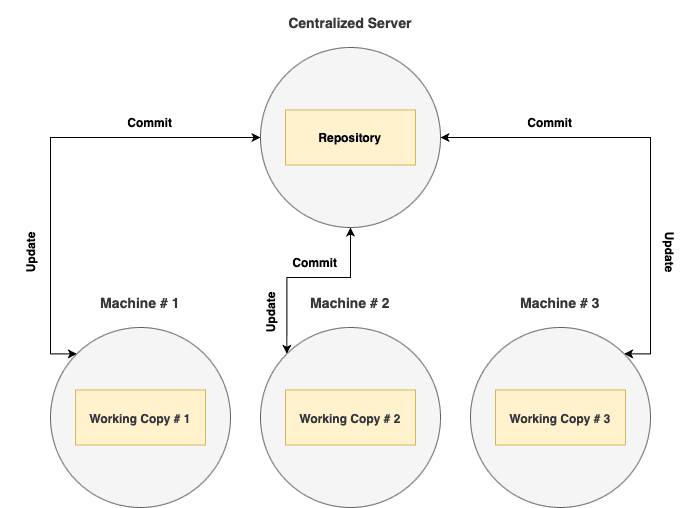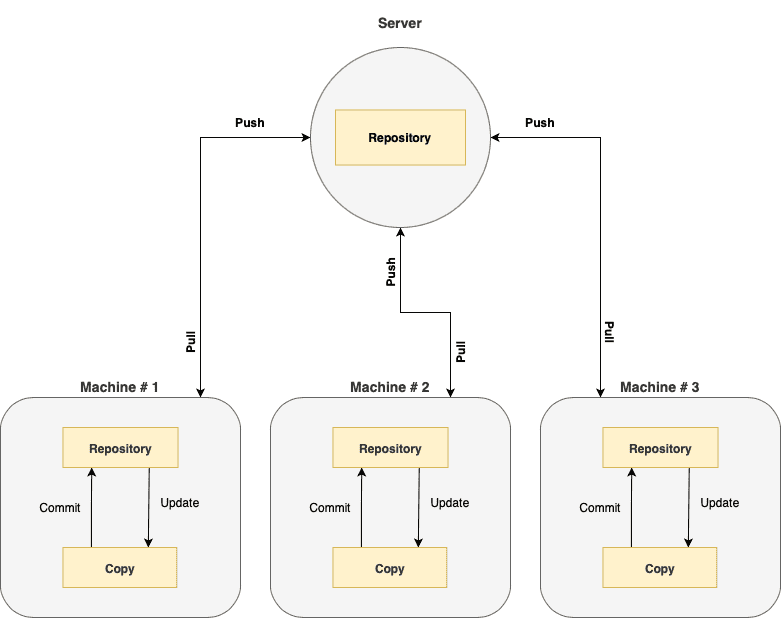1. 概述
在软件开发中,使用版本控制系统(Version Control System,简称 VCS)几乎是不可避免的。它是程序员工具链中最关键的工具之一。对于一个独立开发者,编写一次性脚本时或许可以不用它,但对于团队协作开发来说,没有 VCS,协作将变得异常困难。
目前最流行的 VCS 是 Git。很多刚入门的开发者容易将 Git 与 GitHub 混为一谈,这主要是因为它们名字相似。但实际上,它们是两个不同但密切相关的技术。
本文将带你了解 Git 和 GitHub 的区别,解释什么是版本控制系统,为什么我们需要它,以及 GitHub 作为一个代码托管平台提供了哪些额外功能。
2. Git
Git 是一个开源的分布式版本控制系统(Distributed Version Control System,DVCS),最初由 Linux 内核的作者 Linus Torvalds 开发,专为 Linux 社区开发 Linux 内核而设计。后来,Git 被移植到了 Windows、macOS 等其他平台。
如今,Git 已成为众多开源项目和企业级项目的基础工具。Google、Facebook、Microsoft 等大型科技公司也都使用 Git 来管理他们的代码库。
2.1. 版本控制系统简介
版本控制系统(VCS)是软件配置管理(Software Configuration Management,SCM)的一部分。它的核心作用是管理项目文件的多个版本,尤其是源代码文件。
VCS 主要有两种类型:
集中式版本控制系统(Centralized VCS,CVCS)
所有代码版本都存储在一个中央服务器上,开发者直接向该服务器提交更改。这种模式便于协作,但存在单点故障风险 —— 如果服务器宕机,所有人都无法提交更改。
分布式版本控制系统(Distributed VCS,DVCS)
每个开发者都拥有完整的代码仓库副本,包括所有历史记录、分支和标签。这使得开发者可以离线提交更改,操作也更加快速。
Git 属于后者,是目前最广泛使用的 DVCS。
2.2. Git 的基本工作流程
当你开始一个新项目时,首先需要初始化 Git 仓库:
$ git init .
这个命令会在项目目录中创建一个 .git 子目录,该目录包含了所有版本控制所需的信息(历史记录、分支、标签等)。通常不建议直接修改 .git 目录中的内容。
在开发过程中,你可以通过以下命令添加并提交更改:
$ git add . && git commit -m "first init"
每次提交都是对当前仓库状态的一个快照。你可以通过以下命令切换到某个特定的提交:
$ git checkout <commit-hash>
Git 支持多分支开发,这是非常实用的功能。默认主分支名称通常是 main 或 master:
$ git branch
*master
dev
你可以将本地提交推送到远程仓库:
$ git push
远程仓库也称为 upstream,其他开发者可以通过以下命令拉取最新代码:
$ git pull
3. GitHub
GitHub 是一个基于 Git 的代码托管平台,主要功能是为 Git 仓库提供远程存储和协作支持。
换句话说,GitHub 是 Git 的“家”,它不仅让你可以从任何地方访问你的代码仓库,还提供了许多增强功能来辅助软件开发。
3.1. GitHub 的主要功能
✅ 代码托管与协作
支持 Pull Request、Code Review、分支保护等协作机制。✅ 自动化构建与部署
提供 GitHub Actions,可用于 CI/CD 流程自动化。✅ 包管理支持
支持多种语言的包托管,如 npm、NuGet、Maven 等。✅ 项目管理工具
提供 Issues、Milestones、Project Boards 等功能,便于任务追踪与进度管理。✅ 文档与社区功能
GitHub Pages 和 Wiki 功能支持项目文档发布,用户还可以对项目进行关注、点赞、Fork 等操作。✅ 客户端支持
提供 Web 界面、移动端 App 和桌面客户端(如 GitHub Desktop),也支持第三方工具如 SourceTree、GitKraken、Fork 等。
3.2. Git 与 GitHub 的对比总结
| 功能 | Git | GitHub |
|---|---|---|
| 类型 | 分布式版本控制系统(DVCS) | Git 仓库托管平台 |
| 存储位置 | 本地 | 远程服务器 |
| 协作支持 | 基础命令(如 push/pull) | 高级功能(Pull Request、Review、CI/CD) |
| 用户界面 | 命令行为主 | Web UI + 移动 App + 桌面客户端 |
| 项目管理 | 不支持 | 支持(Issues、Milestones、Project Boards) |
| 自动化流程 | 基础支持(Hooks) | 高级支持(GitHub Actions) |
| 社区与社交功能 | 无 | 支持(Star、Follow、Fork) |
| 安全机制 | 基础安全 | 更强(权限控制、SAST、Secret Scanning 等) |
4. 总结
- ✅ Git 是一个独立的分布式版本控制系统,可以完全脱离 GitHub 使用。
- ✅ GitHub 是基于 Git 的平台,提供了远程仓库托管、协作工具、自动化流程等增强功能。
- ✅ 对于团队开发来说,两者通常结合使用:Git 负责本地版本控制,GitHub 负责远程协作与项目管理。
理解 Git 和 GitHub 的区别,有助于你更好地使用它们,也能在遇到问题时更准确地定位原因,避免“踩坑”。希望这篇文章能帮助你理清这两个工具的关系与使用场景。